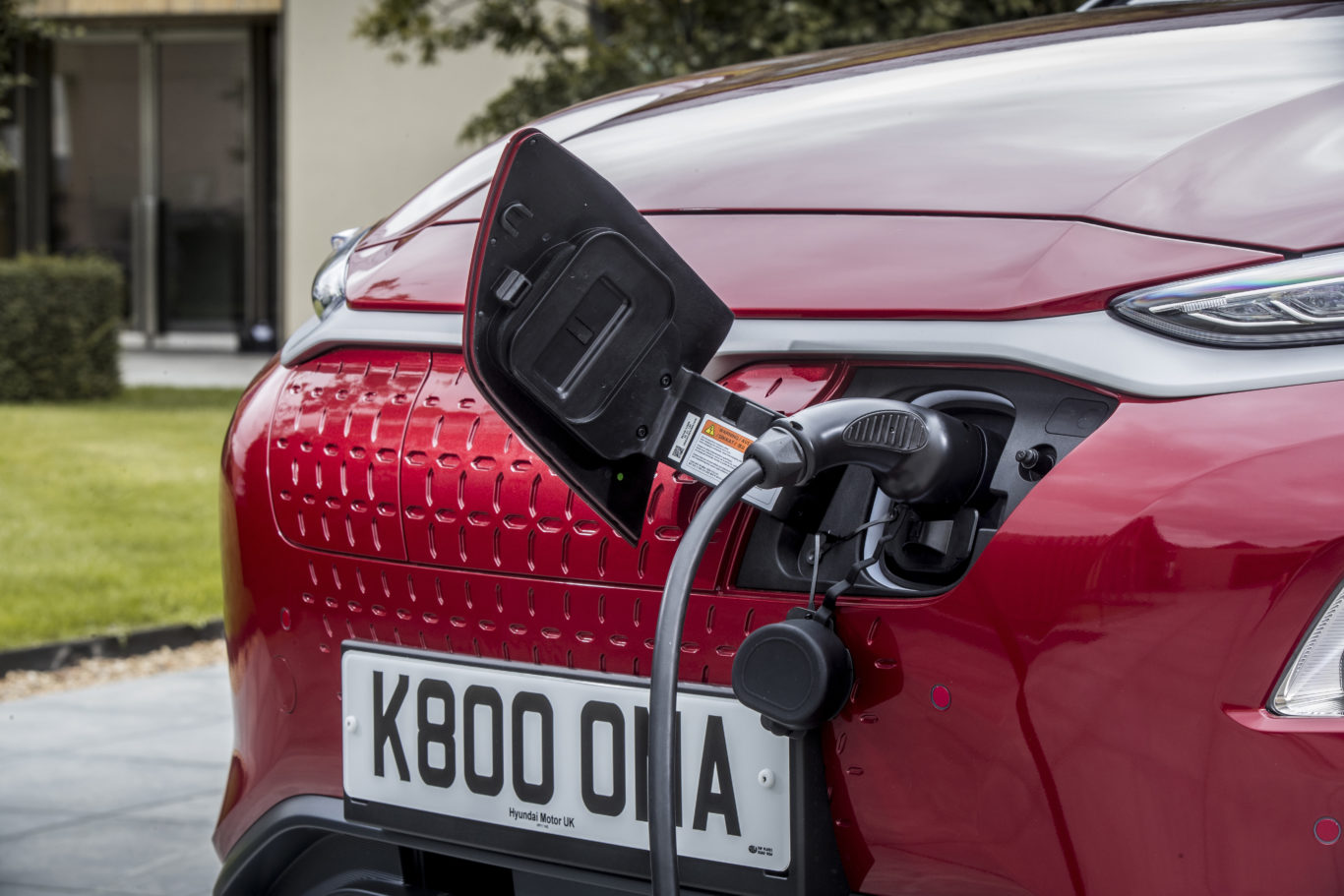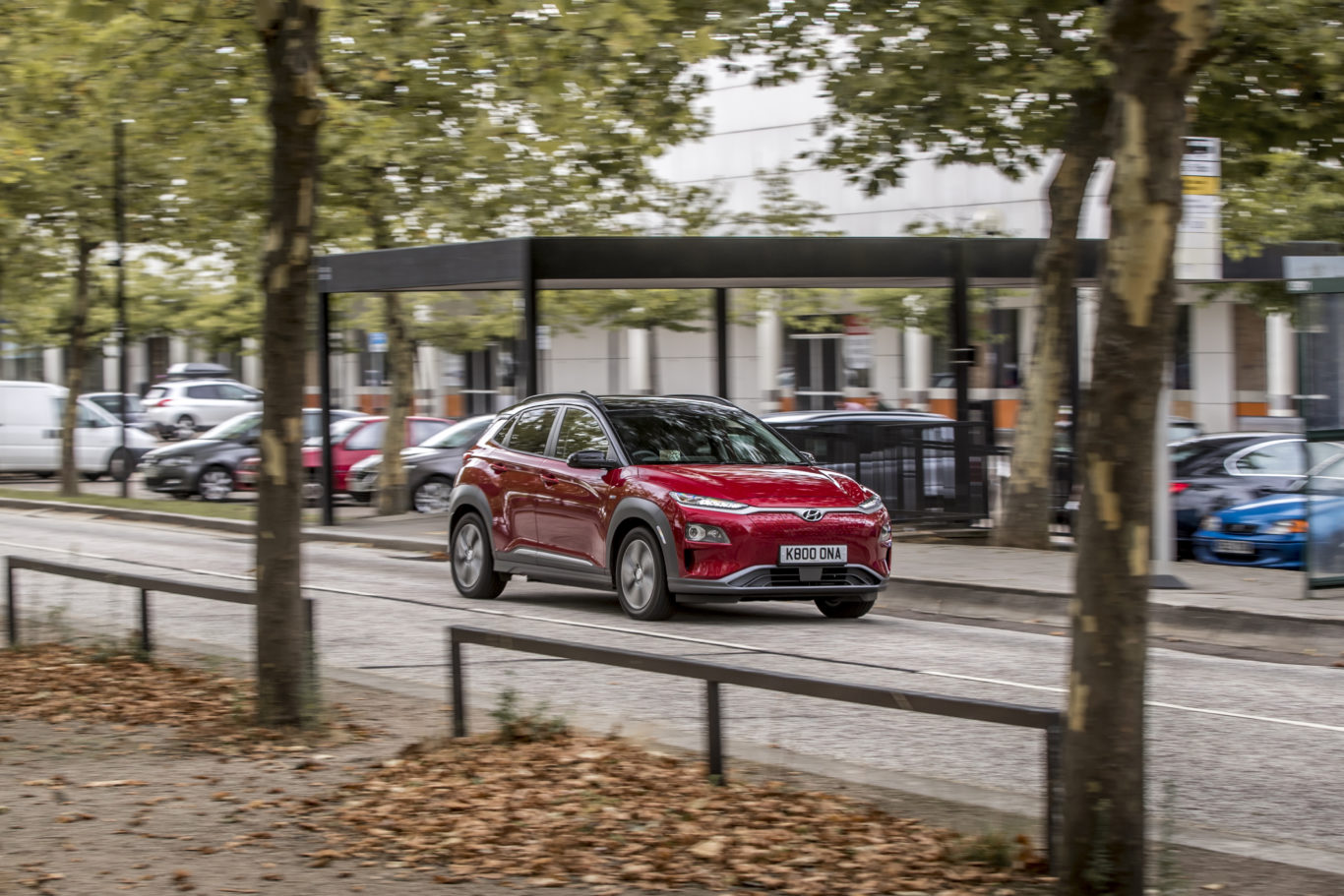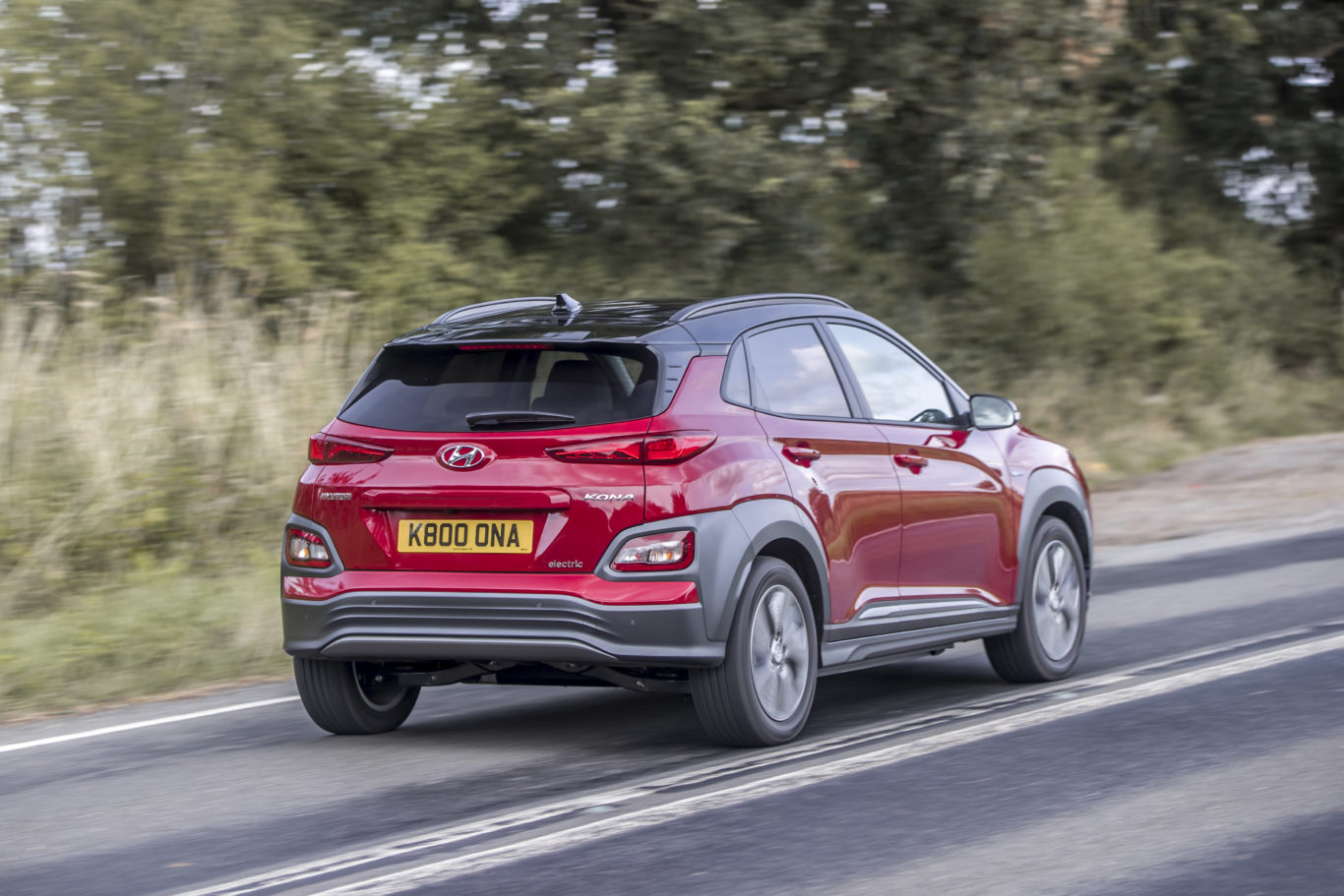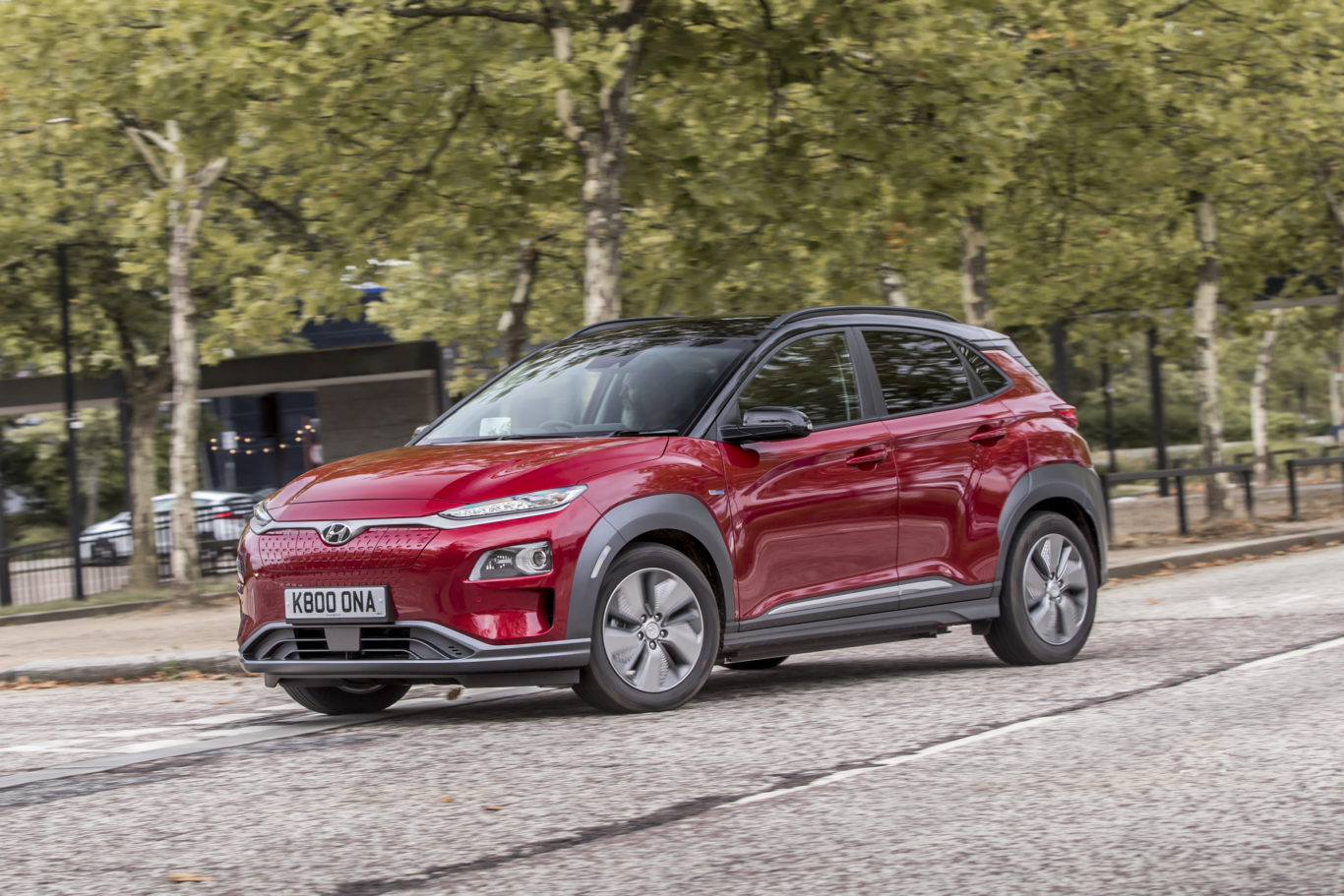
What is it?
Electric cars are something that have quietly been growing in popularity in the past few years. Problem is, their appeal has always been isolated because of either their high list prices or limited electric ranges. Even models such as the best-selling Nissan Leaf suffer from this – the Leaf having a compromised electric range of less than 150 miles in normal driving conditions.

Hyundai, however, has quickly established itself as one of the leading manufacturers when it comes to new tech and fuels, and models such as the Kona Electric – which we’re testing today – are certainly giving rival firms something to worry about.
What’s new?
The obvious difference in the Kona Electric is its electrification, with two different battery packs offered (depending on how many miles you need between charges).

As with the majority of EVs, the Kona’s grille has been closed off, leaving a ‘smoothed-off’ look, with revised front and rear bumpers and also unique (to the Electric) 17-inch alloys. An impressive amount of standard safety equipment is also fitted, with all models coming with kit such as autonomous emergency braking, lane-keep assist and adaptive cruise control.
What’s under the bonnet?
Hyundai offers the Kona Electric with the option of two battery packs – a 39kWh one and the star-of-the-show 64kWh.
Go for the 39kWh, which produces 134bhp, and you’ll be awarded with unspectacular performance and a range of around 180 miles – not enough to give you any bragging rights.

It’s the 64kWh version that deserves the lion’s share of praise. The electric motors generate a hot hatch-rivalling 201bhp, which can propel the Kona Electric from 0-60mph in an admirable 7.3 seconds.
Then there’s the range. Hyundai quotes a range of 279 miles (it’s recently been downgraded from 300), but somewhere around the 250 mark is more likely. It’s enough to put the Kona quite ahead of the competition – other than the Kia e-Niro, which it shares its parts with.
Thoroughly enjoyed not having to pay to park in central London while the Kona was on charge. Didn’t quite enjoy so much coming back to just 40 miles of range added to it after four hours. pic.twitter.com/bmtAuR9Rqq
— Ted Welford (@TedWelford) December 16, 2018
Charge it at a rapid charger, and the Kona will be boosted to 80 per cent charge in 75 minutes, using a wall-box (what most EV owners have at home) and it will take a little under 10 hours and with a standard three-pin socket, it will take an ageing 31 hours to get from empty to full.
What’s it like to drive?
There’s a great misconception about the way an EV drives, and in truth if you spend most of your time in stop start traffic, they’re far better than any petrol and diesel. In traffic, the adaptive cruise control (when operated) means the car just about drive itself, although as there’s still hesitations about calling something ‘autonomous’ – the car requires you to have your hands on the steering wheel at all times.
Regenerative braking also features, and is controlled by steering wheel-mounted paddles. In its harshest setting, lifting your foot of the accelerator is the equivalent to sharp braking, and can help to recuperate a few miles of charge each time you use it.

But other than that, the Kona is ‘normal’ to drive, though it’s not short of a downfall or two. Its heavy weight unearths some shortcomings, such as a rather unsettled ride and plenty of lean in the corners. The ‘eco’ tyres also provide little in the way of grip – meaning unintentional wheelspin is a rather common occurrence if you like to put your toe down every now and again.
How does it look?
As with the standard Kona, the styling is quite divisive. The changes made to the Electric give it an added edge over the standard car, but it’s not all positive.
We like the two-tone roof, smoothed and dimpled front grille and the painted plastic cladding pulls off the ‘Look, I can go off-road’ crossover styling far better than other models.

But the textured 17-inch alloys are not pleasant – and almost appear aftermarket, although we appreciate they’re there to help efficiency. The silver trim applied to both the interior and exterior also isn’t something you expect to find on a car costing £30,000 upwards, either. It feels low-rent and not the premium quality you might expect when splashing this much cash on a small crossover.
What’s it like inside?
Other than the cheap silver trim we’ve already mentioned that litters the cabin, the Kona Electric interior is a pleasant place to be.
Apart from the EV-friendly dials, the main difference over the standard Kona on the inside is the increased interior storage space. The absence of a transmission tunnel not only creates more space for passengers, but also allows for an area underneath the centre console.

Hyundai also thinks that a traditional gear selector is so last century – instead four buttons serve as this – Drive, Park, Neutral and Reverse. It’s a bit gimmicky, but it serves its purpose.
The standard-fit seven-inch screen is fantastic to use, and seamlessly connects to your smartphone with Android Auto or Apple CarPlay. Premium models benefit from a larger eight-inch screen.
While electrification brings some benefits – further interior space and less interference for rear passengers with no transmission tunnel – the Kona’s battery pack results in a smaller boot. Not significantly, but you notice it when the standard Kona’s boot isn’t the largest in the first place.
What’s the spec like?
Three trims are offered on the Kona Electric – SE, Premium and range-topping Premium SE, which our test car was. SE is only offered with the smaller 39kWh battery pack, with standard equipment including a seven-inch touchscreen, adaptive cruise control and a reversing camera.

Premium brings a load more kit – such as front and rear parking sensors, a Krell sound system and an eight-inch touchscreen, as well as further safety equipment. Premium SE comes laden with kit, with extras including LED headlights, a heated steering wheel and a head-up display.
Prices for the Kona Electric start from £30,750, or £36,345 for the more desirable 64kWh version.
Verdict
So, is the Kona Electric the game-changing EV we’ve been waiting for? In short it is, but it’s not faultless.
The realistic range of 250 miles opens the Hyundai up to buyers covering long distances while the fantastic performance and easy-to-drive nature of the Kona makes it an even more compelling option. Little wonder, then, that orders for the Kona Electric are already well oversubscribed.
As an affordable electric car, the Kona Electric is the best yet and is highly commendable. It’s just a shame length waiting lists mean that it’ll be tricky to get hold of one in the first place.

Enjoy the convenience of having The Sunday Post delivered as a digital ePaper straight to your smartphone, tablet or computer.
Subscribe for only £5.49 a month and enjoy all the benefits of the printed paper as a digital replica.
Subscribe